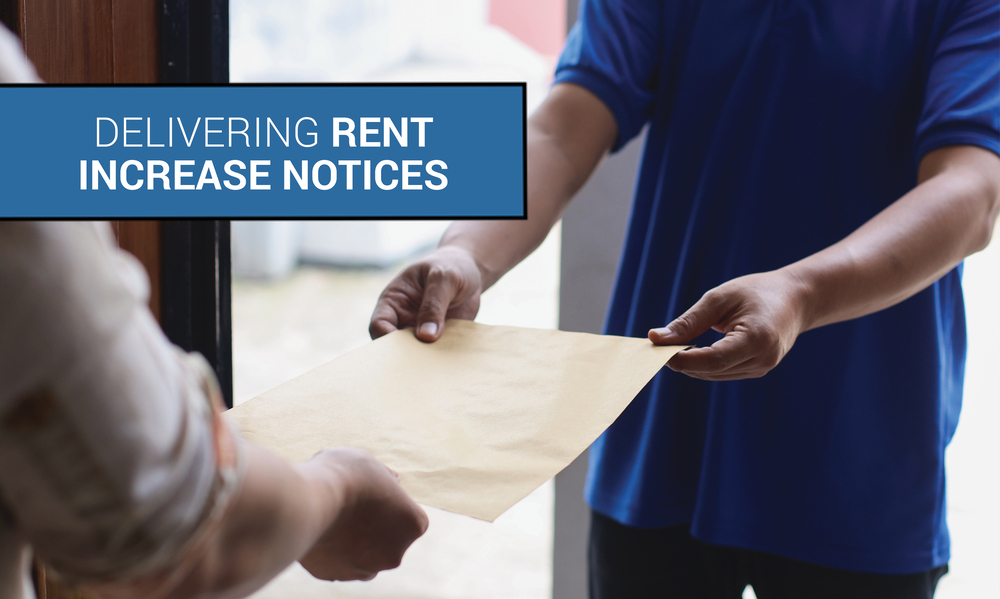Raising the rent is never fun—for you or your tenants. But in a world of rising costs, maintenance expenses, and property taxes, it’s often necessary. The way you deliver a rent increase notice can make or break your relationship with a tenant. Get it wrong, and you risk confusion, resentment, or even legal trouble. Get it right, and you maintain trust and keep your property running smoothly.
Here’s how to do it right—clearly, legally, and professionally.
1. Know the Law
Before you even think about writing that notice, get clear on the legal rules in your jurisdiction. Rent control laws, notice periods, and limits on how much you can raise rent vary by state, city, and even county. Some key points to check:
- How much notice is required? Typically 30 or 60 days, depending on the size of the increase or local laws.
- Are there caps on the increase? Rent-controlled or rent-stabilized units may have limits.
- Does it need to be delivered in a specific way? Some areas require certified mail, others allow email or hand delivery with a signature.
If you ignore the law, tenants can challenge the increase—or even get it voided.
2. Time It Right
Even if you're legally allowed to raise the rent with 30 days’ notice, that doesn’t mean it’s a good idea to wait until the last minute. Give tenants as much lead time as possible. Sixty to ninety days is a good standard.
Why? Because it gives your tenant time to process, plan, and make decisions. That shows you’re not just a faceless landlord trying to squeeze extra cash—you’re someone who respects their life and schedule.
Also, consider the lease cycle. Rent increases are generally best delivered just before a lease renewal. Mid-lease increases are usually not allowed unless the lease has specific clauses. If your tenant is on a month-to-month agreement, you're freer to make changes—but still need to provide the legal amount of notice.
3. Put It in Writing (Clearly)
A rent increase notice isn’t just a formality. It’s a legal document. It needs to be clear, unambiguous, and complete.
At a minimum, include:
- The date of the notice
- The tenant’s full name and address
- The current rent amount
- The new rent amount
- The effective date of the increase
- A reminder of how and when rent is paid
- Contact info for questions
Here’s a simple, clean example:
Subject: Rent Increase Notice – Effective [Date]
Dear [Tenant Name],
This letter is to notify you that beginning [Effective Date], the monthly rent for your unit at [Property Address] will increase from $[Current Rent] to $[New Rent].
This adjustment reflects [optional brief reason—see next section]. All other terms of your lease will remain the same. Please continue to submit rent by [Payment Method] on or before the [Due Date] of each month.
If you have any questions, feel free to contact me at [Phone Number/Email].
Sincerely,
[Your Name / Property Management Company]
[Signature if delivering by mail or hand]
Don’t bury the important info in paragraphs of fluff. Make the numbers and date jump out.
4. Offer a Brief (but Honest) Explanation
You don’t have to explain yourself—but a little transparency can go a long way. Most tenants know costs go up over time. If you’re raising rent to keep pace with taxes, insurance, or maintenance costs, it’s reasonable to say that.
Keep it short and honest. For example:
“This adjustment reflects increased maintenance and operating costs.”
Or:
“This rent increase aligns with current market rates for comparable units in the area.”
Don’t get defensive, and don’t over-justify. You’re not asking permission—you’re giving notice—but a sentence or two of rationale can reduce pushback.
5. Be Professional, Not Robotic
Tone matters. A cold, corporate letter makes tenants feel like they’re just numbers on a spreadsheet. A message that’s overly casual, on the other hand, might sound unprofessional or unclear.
The right tone is firm, respectful, and human. You’re running a business, but you’re dealing with people’s homes. Small touches help. Use the tenant’s name. Thank them for being a tenant. Keep your communication polite and consistent with how you’ve interacted before.
Avoid passive-aggressive phrasing like “As you are aware, rent has remained unchanged for some time now.” It’s not about guilt-tripping. It’s about clarity and respect.
6. Choose the Right Delivery Method
Always deliver rent increase notices in a way that meets legal standards and creates a paper trail.
The most common and effective delivery methods are:
- Certified mail with return receipt – You get proof they received it.
- Email (with read receipt) – Only if your lease or local law allows it.
- In-person delivery – Have them sign a copy to confirm receipt.
- Posting and mailing – In some areas, taping it to the door AND mailing is acceptable, but check your laws first.
Whatever method you choose, keep a copy of the notice and proof of delivery.
7. Be Ready for Reactions
Even if the increase is modest and legal, some tenants may react emotionally. Expect questions like:
- “Why now?”
- “Can we negotiate?”
- “Do I have to move?”
Be prepared to answer calmly and consistently. If the tenant is a great one and you want to keep them, it may be worth negotiating—especially in a soft rental market. But don’t undermine your notice with uncertainty. If you’ve set the increase based on solid reasoning, stick to it.
8. Don’t Surprise Long-Term Tenants
If a tenant’s been with you for years and never had an increase, a big jump out of nowhere feels like a slap. Ease into it. If you’re planning a large adjustment, consider doing it in phases, or giving extra lead time.
A tenant who’s treated the property well for years deserves the courtesy of a heads-up and maybe a conversation. Loyalty cuts both ways.
9. Keep It Consistent
Raising rents inconsistently—or targeting certain tenants—can get you into legal hot water. Make sure you’re applying increases based on objective criteria: lease renewals, market comparisons, cost increases—not personal feelings.
Maintain a spreadsheet or system to track when leases renew, current rent levels, past increases, and when you last notified each tenant. A good paper trail protects you.
10. Don’t Let It Slide
Many landlords avoid rent increases because they’re uncomfortable. But holding rent flat for years leads to sudden, painful hikes that tenants resent even more.
The better strategy: small, consistent, annual increases. It keeps rent in line with inflation and reduces the shock factor.
Raise Rent, Not Tension
Raising rent is part of being a landlord, but how you do it determines whether it damages your relationship or keeps things running smoothly. Respect the law, respect your tenant, and respect your business. Clear, timely communication is the key.
Done right, a rent increase doesn’t have to be a fight—it can be a professional transition that keeps both sides on good terms.


